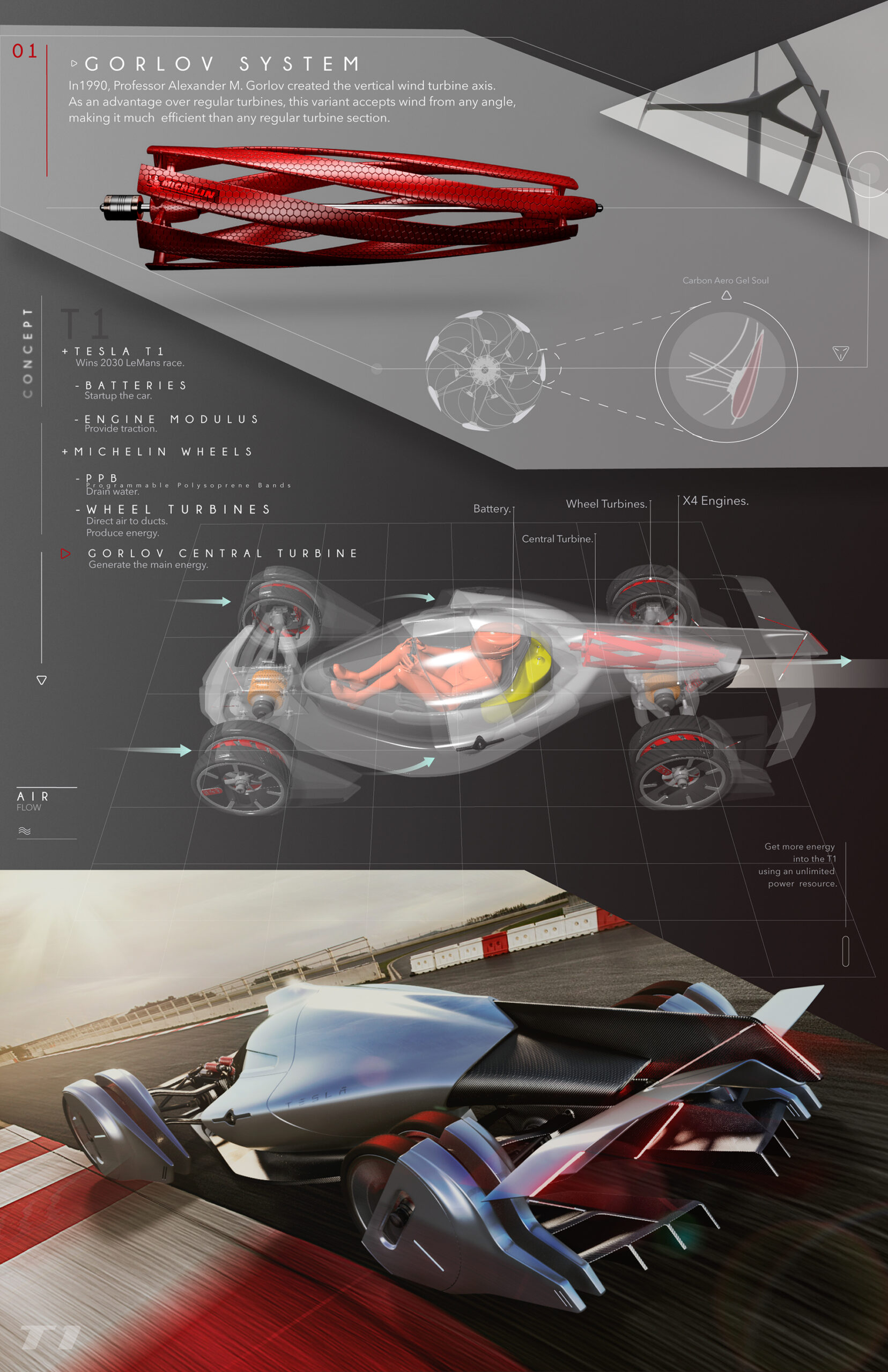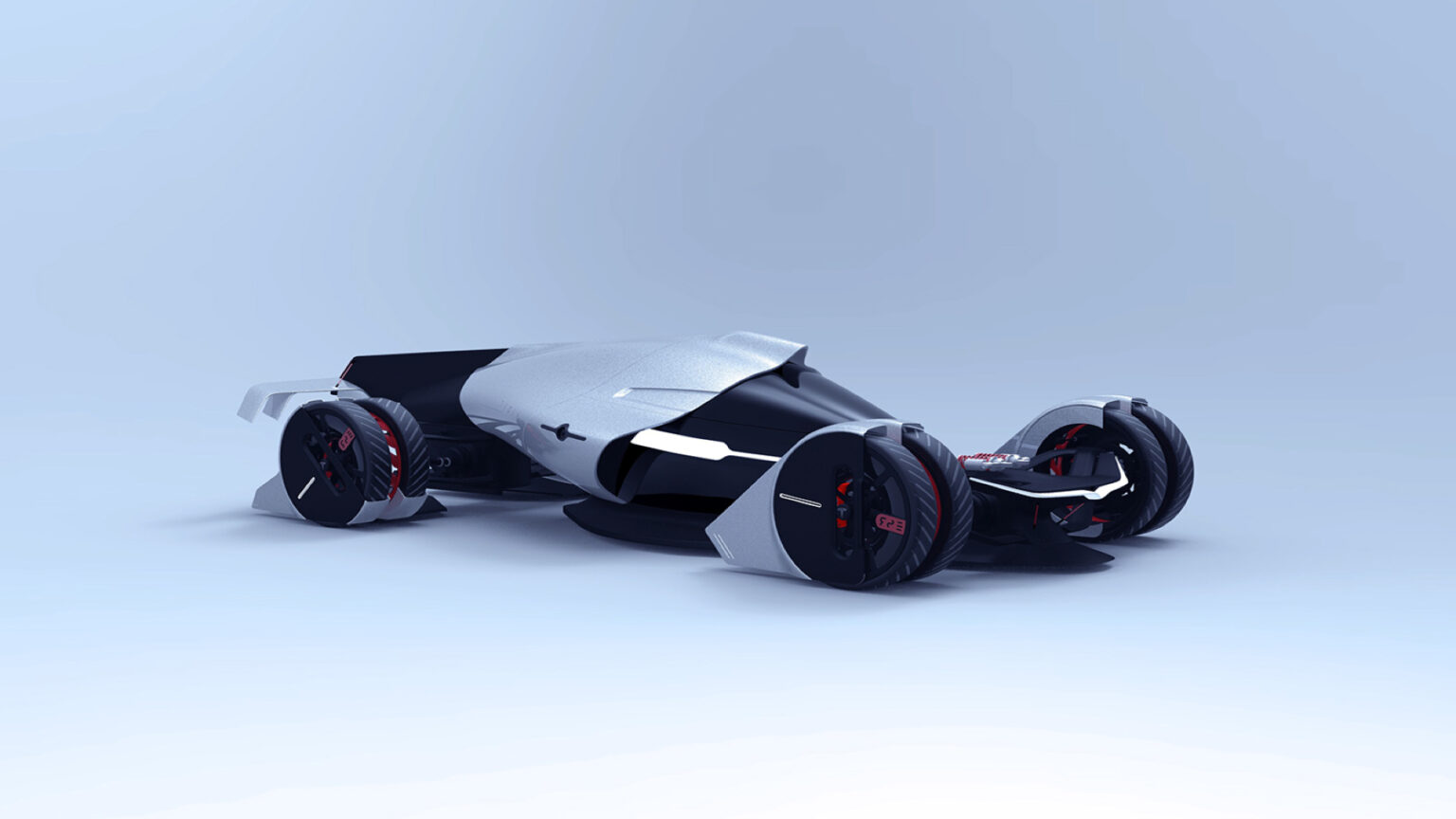Innovation doesn’t come in half-measures, and Tesla seems hellbent on proving it yet again. The electric vehicle (EV) powerhouse known for rewriting the automotive playbook is now throwing the rulebook out entirely with a fresh gambit into wind-powered vehicles. Enter the Tesla T1, a concept so wild it might just be the spark for an entirely new generation of motorsport.
While this kind of move feels straight out of science fiction, it’s grounded in Tesla’s relentless push for clean energy dominance. But it’s not just the tech under the hood that’s fascinating. AI and machine learning are making waves within the tech and auto sectors, shining a light on emerging sentiment trends around companies like Tesla and their ambitious future-facing projects.
With Tesla already commanding a cult-like fervor in the stock market, the Tesla T1 ups the ante for the entire EV industry.
What Is The Tesla T1?
Picture this: A vehicle built to dominate the grueling 24 Hours of Le Mans, but instead of running on fuel or even batteries alone, it harnesses wind energy. Originally conceived by five visionary students at the Institute of European Design Barcelona in response to the 2017 Michelin Design Challenge, the T1 is a striking cocktail of elegance and raw, experimental energy. It ditches the idea that racing has to leave a carbon footprint in its dust.
Standout Features Of The Tesla T1
The Tesla T1 doesn’t just glide on wind—it weaponizes it with cutting-edge tech. Here are the highlights:
- Turbines Embedded in Tires: The T1’s Michelin tires integrate 3D-printed aerogel turbines that channel airflow into a larger turbine at the vehicle’s rear. This powers a 70kW battery, giving the car added juice for acceleration.
- Graphene Tires + Magnesium Wheels: Advanced materials keep the car both durable and feather-light, optimized for top-tier performance.
- Agility on Steroids: A dynamic axis system allows independent turning for the front and rear axles, perfect for the tight twists of competitive motorsport.
- Performance Stats That Dazzle: With a curb weight of 1,980 pounds and a jaw-dropping output of 1,000 kW (1,770 pound-feet of torque), the T1 boasts a projected top speed of 255 mph. Yeah, you read that right—255 mph.

Tesla plans to debut this beast by 2030 at Le Mans, a move that straddles ambition and audacity. But beyond the track, could this be a play to refine wind-powered tech for everyday EVs? If so, Tesla’s challenging everyone—from traditional automakers to startups—to rethink what’s possible.
Future Possibilities for EVs That Feel Wildly Attainable
- Vehicles That Create Their Power: Tesla’s T1 experiment feeds directly into the dream of renewable-equipped road cars. Imagine a future where turbines, solar panels, or even regenerative tech flip long-distance EVs into self-sustaining ecosystems, cutting dependency on charging stations by half or more. A bold move? Yes. But Tesla thrives on rethinking “impossible.”
- Smarter Cities and Mobility-as-a-Service: Compact EVs could pack interchangeable battery systems or even deploy self-charging modules, operating as urban shuttles. No need to hunt for a parking spot; these vehicles recharge while docked at micro-mobility stations. Think of it as a Tesla Supercharger for your Vespa-inspired EV of the future.
- Lifesavers on Wheels: Emergency and utility EVs powered by renewables could redefine disaster response. Picture an ambulance or utility truck able to function in wildfires, hurricanes, or power grid collapses without ever needing fuel. For Tesla, this vision pairs perfectly with industrial-grade models like their Cybertruck or Semi.
- Autonomous Fleet Domination: The real curveball? Combining EV smarts with AI would make these tech marvels capable of diagnosing maintenance needs, recharging themselves, and optimizing traffic patterns. We’re talking self-sufficient machine kingdoms cruising town without human babysitters.
Formula E Goes Prime-Time
While Tesla spins the tech story of a wind-driven future, Formula E is already showing us what happens when EVs get competitive—and outrageously fast. Unlike most motorsports, Formula E swaps the screech of combustion engines with silence and sustainability. Teams are redefining speed through advances in battery capacity, aerodynamics, and energy recovery, proving that green is not a tradeoff for adrenaline.
The racing circuit also doubles as a high-stakes R&D lab for the world’s EV giants. Think of Formula E as less “car porn” for gearheads and more a testing ground for tech that will eventually hit the streets.
The Power Players Steering the EV Revolution
The EV space is crowded with players, but a few stand well ahead of the pack thanks to innovation pipelines that tap deeply into engineering excellence and market dynamics. Here’s a closer look at four juggernauts reshaping the intersection of EV innovation, stock market attention, and raw tech evolution.
1. Tesla, Inc. (NASDAQ: TSLA)
Tesla isn’t just an automaker; it’s a juggernaut of sentiment—the kind of company that trades more on what could happen than what is happening. Its bold entry into wind-powered tech has sent AI sentiment analyzers buzzing, but what’s clear is that Tesla doesn’t just want to dominate EVs—it wants to rewrite the rulebook.
Whether it’s Machine Learning-guided autopilot systems or future-facing experiments like T1, Tesla’s market cap continues to reward its risk-it-all mentality. Investors betting on Elon Musk’s vision find themselves routinely rewarded—but with Tesla’s growth tied to grand expectations, it’s a high-stakes thrill ride.
2. Porsche AG (FRA: P911)
Porsche’s entrance into Formula E felt inevitable, given its focus on precision and engineering pedigrees. But this wasn’t some vanity project. The iconic brand is leveraging the series as fertile ground to push battery technology and race-inspired aerodynamics right into its growing EV consumer lineup. Backed by Volkswagen, Porsche’s market presence carries serious weight, and its Formula E success only reinforces premium EV expectations.
3. Lucid Group, Inc. (NASDAQ: LCID)
Lucid, the wild card, is no stranger to making bold promises—and delivering. Positioned as Tesla’s closest competitor in terms of raw innovation and engineering smarts, it’s quickly staking claims as the EV industry’s “luxury disruptor.” Having carved out a premium niche in consumer EVs, imagine what Lucid’s powertrains could bring to Formula E circuits. Investors are beginning to connect Lucid’s sharp climb in auto-racing tech directly with its rapid (and risky) brand evolution.
4. NIO Inc. (NYSE: NIO)
Don’t confuse NIO’s focus on dominance in China with limited ambition; the company’s laser focus on its domestic market gives it a strategic edge. NIO competes hard in Formula E, using the track as a showcase for its future ambitions within autonomous technologies. Already outperforming on delivery targets, NIO’s raising questions of who might even be capable of matching its pace in Asia—and perhaps globally.
Sentiment Meets Reality
With so many players in the game, separating the speculative hype from grounded opportunity in the EV market is not just a challenge, it’s a necessity. And that’s where AI-driven sentiment analysis flips the script. Algorithms like the one we use cut through the noise—from Reddit threads to Bloomberg—deciphering which companies are seen as cultural icons versus which are seen as reliable players. Tesla, for instance, thrives on “cult buzz,” while NIO builds trust among analysts for consistent growth.
The critical question, though, is whether AI insight will one day become the “steering assistant” for how these companies shape their tech. Could machine learning dictate how wind turbines are manufactured? Could autonomous fleets respond dynamically to live sentiment shifts, like a Spotify playlist that gets smarter as you listen? If Tesla’s vision sticks, the T1 might be far less isolated as a concept and more of a blueprint for a truly renewable future.
Wrapping It Up: Racing Toward What’s Next
Electric racing once seemed like a weird niche idea, but Formula E stands as proof that speed and sustainability are not at odds. Add Tesla’s headline-snatching wind-turbine experiments to the mix, and we’re entering uncharted waters. Whether it’s AI tuning an algorithmically perfect race strategy or cars self-replenishing as they hurtle past finish lines, the future of EV innovation isn’t just coming; it’s screaming around the corner.
Final word? Autonomous vehicles may own the roads someday, but EVs own the idea of tomorrow. And with companies like Tesla, Porsche, NIO, and Lucid winding tighter along the tech-racing helix, there’s no telling how far or fast we’ll go. Go ahead—buckle up. This next lap could change everything.
Want to read more? Browse through our other content here.


0 Comments